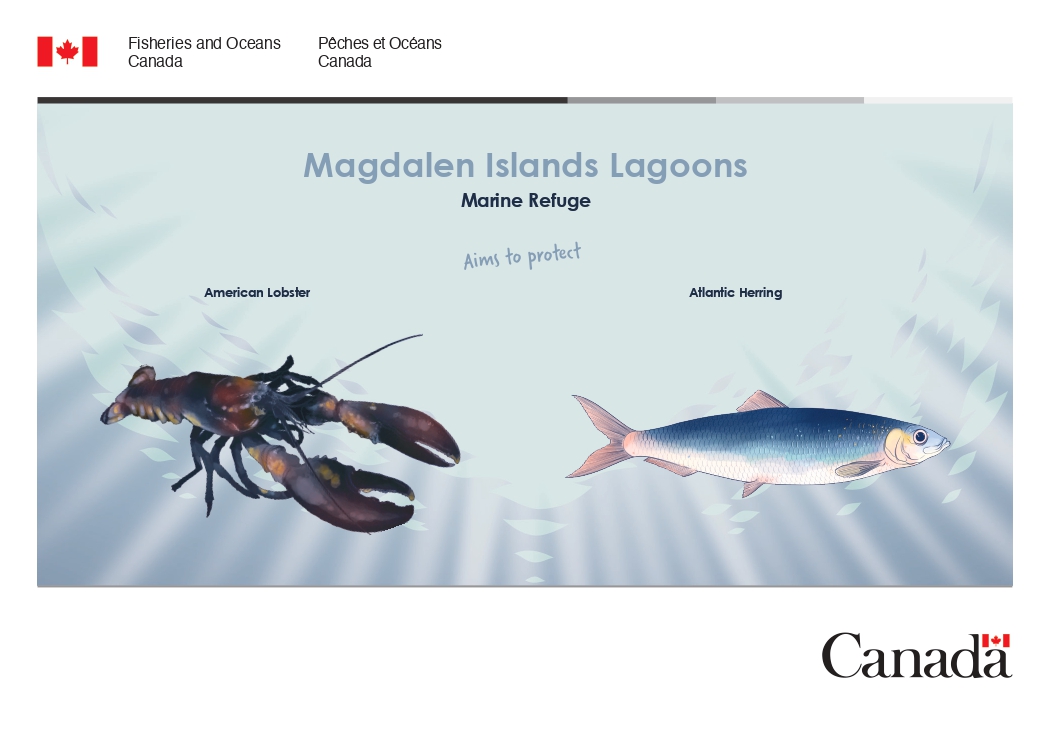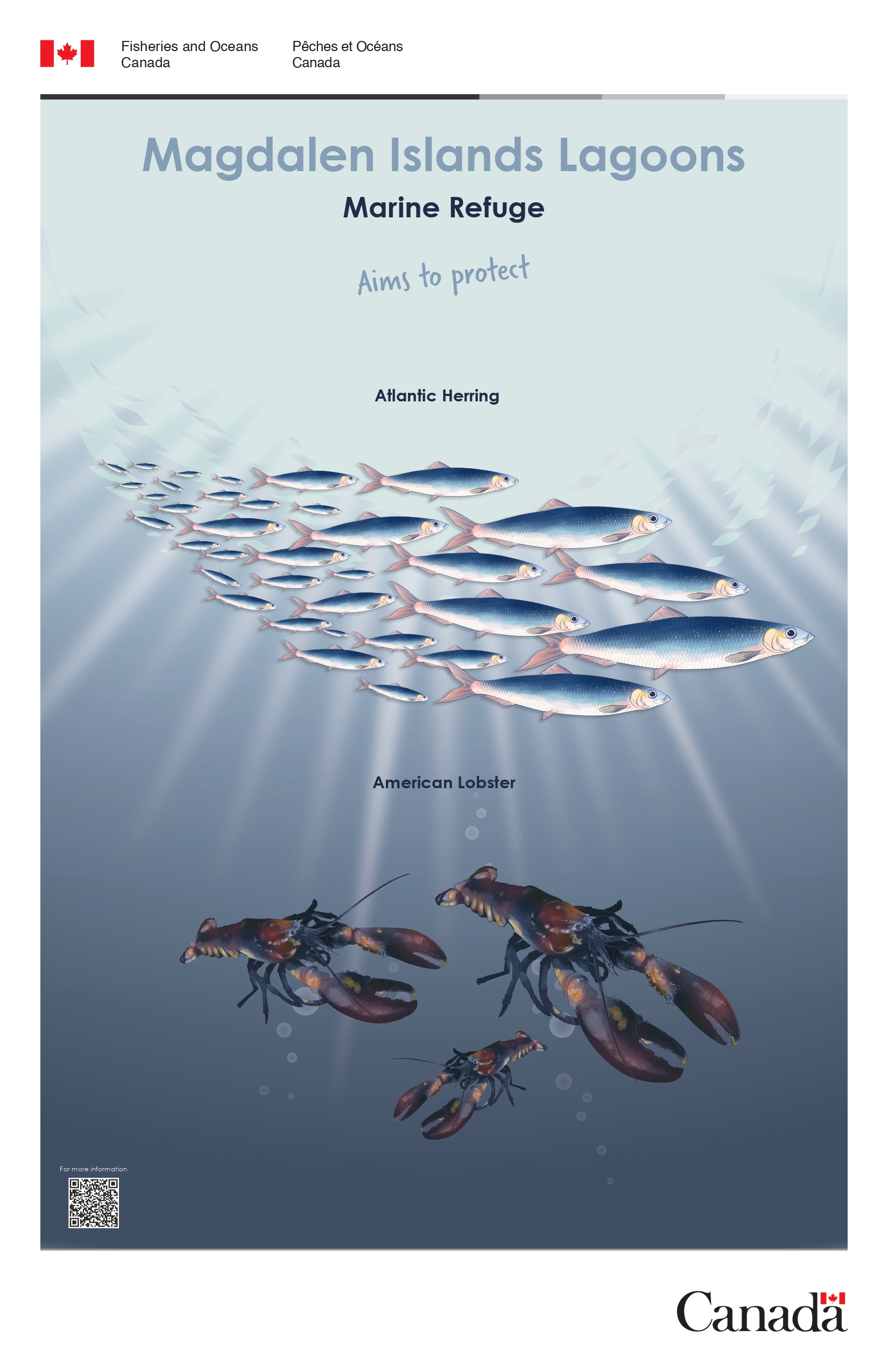Magdalen Islands Lagoons (6 overlapping closures)
- Location
- Estuary and Gulf of St. Lawrence Bioregion (Quebec)
- Approximate Size (km²) contribution to Marine Conservation Targets
- 136 km²
- Approximate % coverage contribution to Marine Conservation Targets
- <0.01%
- Conservation Objective
- Protect lobster habitat and conserve herring spawning areas
Ecological Components of Interest
Species of regional importance: American lobster and herring
- Why they are important: American lobster and herring are both commercially important species.
Habitat that is important to biodiversity conservation: American lobster habitat, herring spawning area
- Why it is important: This is an area of high biological diversity, productivity, and naturalness. By supporting herring spawning, this area is important to the life-cycle of herring.
Prohibitions
The ecological components of interest are effectively conserved through the following prohibitions:
- Hydraulic dredge for the Atlantic razor clam and Atlantic surf clam
- Gill net and square net fishing for winter flounder
- Gill net fishing for Atlantic herring
- Pelagic trawl, Danish and Scottish seine for the yellowtail and the winter flounder
- American lobster trap
Other Considerations
No human activities that are incompatible with the conservation of the ecological components of interest may occur or be foreseeable within the area.
Environmental Context
The Magdalen Islands lagoons act as spawning and breeding grounds, nurseries, and refuges for many aquatic species.
By protecting the bottom habitat, this closure can also help protect the habitat of numerous other species of fish and invertebrates including commercially important species such as Atlantic surf and razor clams, winter and yellowtail flounder, and Atlantic herring.
This closure contains eelgrass habitat, an ecologically significant species (ESS) and a highly productive ecosystem that can support a wide variety of species in key life stages. Marshes, which are a unique coastal habitat, are also present in this area.
This closure also helps protect the habitat of the threatened American eel.
- Date modified:


